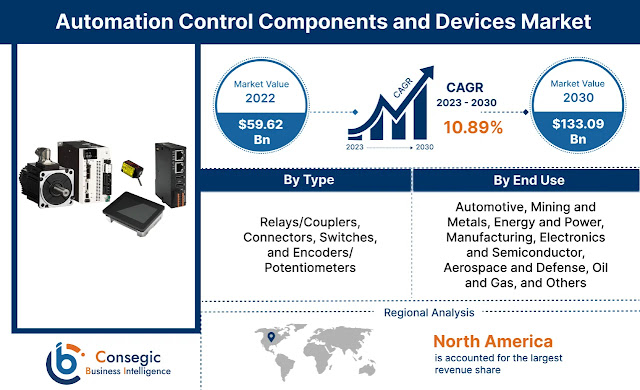Powering Grid Resilience: A Strategic Outlook on the Teleprotection Market
The Teleprotection Market plays a critical role in the modernization of global energy and industrial infrastructure. At its core, teleprotection refers to systems that transmit critical protection signals—often in real-time—across long distances to isolate faults and prevent widespread outages or equipment damage. These systems are the backbone of secure, responsive, and resilient power grids and are increasingly vital in utilities, oil & gas, industrial automation, and transportation networks.
In a world grappling with electrification, distributed energy resources, and cybersecurity threats, teleprotection systems ensure network stability, fault management, and asset protection. Their relevance has grown as industries shift toward smarter and more interconnected operations.
Market Size and Growth Potential
As of 2024, the Teleprotection Market is valued at USD 27.29 billion, with projections indicating growth to USD 31.99 billion in 2025. By 2032, the market is forecast to exceed USD 109.63 billion, growing at a compound annual growth rate (CAGR) of 21.3% from 2025 to 2032.
This high-growth trajectory reflects an urgent global push toward grid modernization, real-time communication infrastructure, and proactive asset protection. The rapid scale-up of renewable energy projects, expansion of smart grids, and the growing need for low-latency, high-reliability communication protocols are all fueling teleprotection system adoption. For investors and technology providers, this signifies a rare blend of high demand and high complexity—ideal for innovation-driven value creation.
2. Key Market Segments
By Component
-
Protection Relays
-
Trip Circuits and Circuit Breakers
-
Test and Monitoring Equipment
-
Supervisory Control and Data Acquisition (SCADA)
-
Backup and Redundancy Systems
By Communication Type
-
Wired
-
Wireless
By Application
-
Transmission Lines
-
Distribution Networks
-
Traffic Management
-
Others
By End-User
-
Power Utilities
-
Oil & Gas
-
Transportation
-
Industrial
This segmentation provides a multi-dimensional view of how teleprotection technologies serve different operational environments. For instance, wired communication remains dominant in high-security, mission-critical applications, while wireless solutions are gaining ground in mobile or remote environments. SCADA systems and protection relays serve as the intelligent nervous system of modern grids, constantly monitoring and executing fast-response protocols when anomalies occur.
3. Key Players in the Market
ABB Ltd. (Switzerland), Hitachi Energy Ltd. (Switzerland), Siemens (Germany), Hubbell Incorporated (US), General Electric (US), RAD (Israel), Schneider Electric SE (France), Cisco Systems, Inc. (US), Eaton Corporation (Ireland), Toshiba Corporation (Japan)
4. Market Trends and Drivers
Grid Decentralization & Renewable Integration
As utilities embrace distributed energy resources like solar, wind, and battery storage, grid complexity increases. Teleprotection systems are essential for maintaining synchronous operation and fault isolation in these dynamic environments.
Cyber-Physical System Security
With the growing risk of cyberattacks on infrastructure, teleprotection systems now integrate advanced encryption, redundant channels, and secure routing protocols to protect mission-critical signals.
IoT and Edge Computing Integration
Teleprotection devices are becoming smarter, with edge analytics capabilities to enable predictive fault detection and self-healing responses at the grid edge—reducing downtime and improving system resilience.
Regulatory Compliance and Standardization
Government mandates for improved grid reliability, especially in North America and Europe, are pushing utilities to adopt standardized teleprotection architectures to align with IEEE, IEC, and NERC reliability guidelines.
Latency Reduction as a Priority
As milliseconds count in fault prevention, systems that can offer ultra-low latency communication between substations, control centers, and field equipment are gaining preference across all regions.
5. Regional Insights
-
Asia Pacific is leading the market’s growth due to vast infrastructure investments, especially in China, India, and Southeast Asia. With expanding energy needs and an aggressive push toward smart grids, this region is a high-growth zone for teleprotection technologies.
-
North America continues to invest heavily in grid reliability, especially in the face of increasing extreme weather events and cyber threats. The U.S. and Canada are focusing on modernizing transmission networks, and teleprotection systems are a cornerstone of these initiatives.
-
Europe is emphasizing grid harmonization, renewable integration, and interconnectivity across national boundaries. Germany, the UK, and Nordic countries are integrating advanced teleprotection as part of their low-carbon transition strategies.
-
Latin America and Middle East & Africa are emerging regions with growing investment in energy infrastructure, utility digitization, and pipeline monitoring. As these regions build out smart utility frameworks, teleprotection will be vital to securing these new networks.
6. Forecast and Outlook
From now through 2032, the Teleprotection Market is set to evolve into a cornerstone of critical infrastructure protection. Expect further convergence between telecommunications, AI, and grid management systems, as utilities and industrial operators demand autonomous fault response, real-time diagnostics, and next-generation protection protocols.
The market will be increasingly shaped by vendor interoperability, cyber resilience, and modular system design, making flexibility and future-proofing key procurement criteria.
7. Conclusion
The Teleprotection Market is no longer a niche within the electrical engineering sector—it’s becoming an essential pillar of global infrastructure resilience. With its ability to prevent catastrophic failures, enhance operational safety, and support the seamless integration of decentralized power assets, teleprotection stands as a strategic enabler of energy transformation.
For tech providers, system integrators, and infrastructure investors, this market offers a rare combination of urgency, scale, and innovation potential. Those who can deliver secure, responsive, and scalable solutions will help shape the future of the world’s most critical systems.
.webp)



Comments
Post a Comment